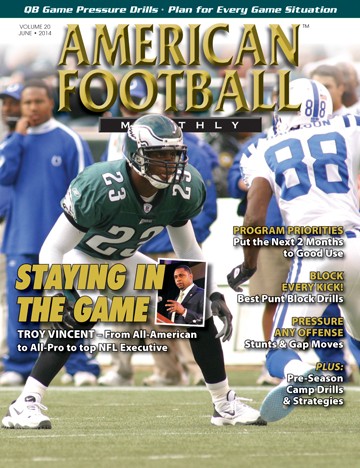AMERICAN FOOTBALL MONTHLY THE #1 RESOURCE FOR FOOTBALL COACHES
Article CategoriesAFM Magazine
|
Strength Report: Screen, Evaluate, and Correctby: Dan LearyAssistant Coach and Strength and Conditioning Coach, Seaside High School (OR) © More from this issue The Functional Movement Screen (FMS) was developed by Gray Cook and is used by many NFL, NHL, and MLB teams as well as colleges throughout the country. The FMS is a screen of seven movements, giving a grade of 0-3. Using the FMS, we can look at imbalances and dysfunctions in our athletes and prescribe corrective exercises that will help them move better. Why do we want them to move better? The answer is simple: they will be more athletic and also more injury-proof. The FMS also allows us to see any issues an athlete may have before we ever send them on the field or into the weight room.
| 
|
Subscribe now to start receiving our monthly magazine PLUS get INSTANT unlimited access to over 4000 pages of 100 percent football coaching information, ONLY available at AmericanFootballMonthly.com! | |||
NEED PASSWORD HELP |




